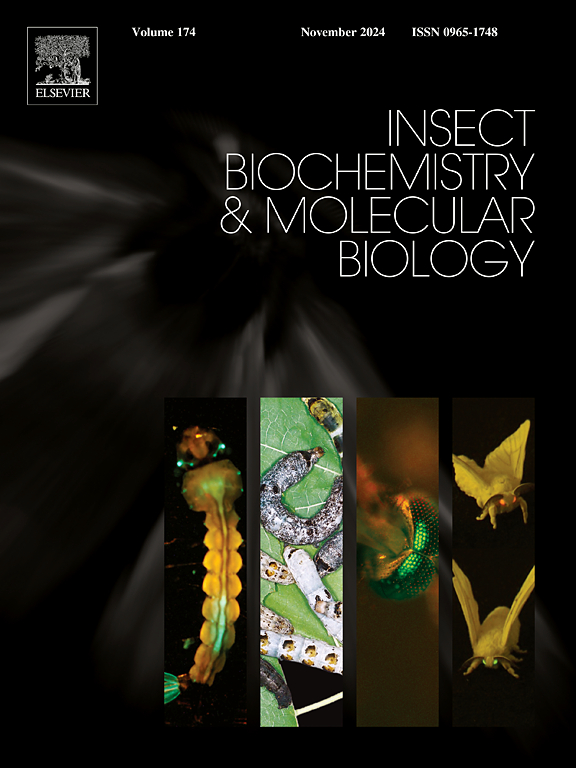用蛋白质组学和转录组学方法研究蜜蜂血细胞表面体。
IF 3.7
2区 农林科学
Q2 BIOCHEMISTRY & MOLECULAR BIOLOGY
引用次数: 0
摘要
本研究绘制了蜜蜂细胞免疫的主要细胞——蜜蜂血细胞的表面体。表面体是细胞表面表达的蛋白质,它决定了细胞如何与微环境相互作用。通过蛋白质组学和转录组学的结合分析,鉴定出1142个编码细胞表面蛋白的基因,显示出高度的多样性。我们的分析确定了与主要昆虫免疫途径和蛋白质相关的受体,这些受体以前被认为是其他无脊椎动物的血细胞标记物。值得注意的是,一些检测到的基因提示编码病毒受体、吞噬相关蛋白或参与血细胞增殖的蛋白。基因本体论分析强调了血细胞的重要功能。最突出的集群是跨膜受体蛋白激酶活性,包含超过25%的已识别术语。其他重要的簇包括细胞粘附分子结合、信号受体结合、嗅觉受体活性和金属内肽酶活性。本研究提出了几种潜在的蜜蜂血细胞标记物,并为基于细胞表面标记物的新型血细胞分类奠定了基础。本文章由计算机程序翻译,如有差异,请以英文原文为准。

Exploration of the hemocyte surfaceome of Apis mellifera by a proteomic and transcriptomic approach
This study maps the surfaceome of Apis mellifera hemocytes, the protagonist cells in honey bee cellular immunity. The surfaceome, proteins expressed at the cell surface, is crucial as it determines how cells interact with their microenvironment. Through a combination of proteomic and transcriptomic analyses, 1142 genes encoding cell surface proteins were identified, revealing a high level of diversity. Our analyses identified receptors associated with the major insect immune pathways and proteins previously recognized as hemocyte markers in other invertebrates. Notably, several of the detected genes suggest to encode viral receptors, phagocytosis-related proteins, or proteins involved in hemocyte proliferation. A gene ontology analysis highlighted important functions of the hemocytes. The most prominent cluster was transmembrane receptor protein kinase activity, encompassing over 25 % of the identified terms. Other significant clusters included cell adhesion molecule binding, signalling receptor binding, olfactory receptor activity, and metalloendopeptidase activity. This study suggests several potential honey bee hemocyte markers and establishes a foundation for a novel hemocyte classification based on cell surface markers.
求助全文
通过发布文献求助,成功后即可免费获取论文全文。
去求助
来源期刊
CiteScore
7.40
自引率
5.30%
发文量
105
审稿时长
40 days
期刊介绍:
This international journal publishes original contributions and mini-reviews in the fields of insect biochemistry and insect molecular biology. Main areas of interest are neurochemistry, hormone and pheromone biochemistry, enzymes and metabolism, hormone action and gene regulation, gene characterization and structure, pharmacology, immunology and cell and tissue culture. Papers on the biochemistry and molecular biology of other groups of arthropods are published if of general interest to the readership. Technique papers will be considered for publication if they significantly advance the field of insect biochemistry and molecular biology in the opinion of the Editors and Editorial Board.

 求助内容:
求助内容: 应助结果提醒方式:
应助结果提醒方式:


